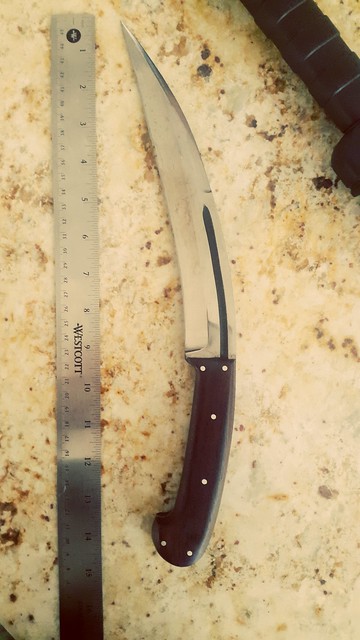Any reading or movie or whatever falls short of actual war...and it scars you the way no egghead could ever conceive....to be avoided rather than dreamed of......
The type V messer, truppe was a smaller commercial lightly built relatively thin and shorter bladed proposition and never issued, anything lacking BUNDE mark is retail foods...the type IV (Type 1964 used by both airborne and armored crews) is massively constructed and cast steel head serves as breaker and buster as well...comparison below....dead giveaway on commercial knives is screw pivot for marlin spike, and note the issue knives scissor open around the brass bushing spike/lanyard pivot and has massive machined steel leaf springs, full stainless liners both sides and scales brass-riveted to liners. Also the guide bar on side of the 3/16ths" thick ricasso is pegged into place as are the flat springs for trigger and spike. The blade steel from this particular outfit is superb, holds a fantastic edge and came out of box razor and i mean razor sharp....it is a wonderful anything-knife which stabs effectively as it cuts due to distal taper and full convex grind...one of the most controllable handles of non-fixed blades and also extremely secure and safe...bulky by modern ideas is still far more compact than a fixed blade (as shown above) and so goes most everywhere as it is a collapsible fixed blade in my mind..
I carry 15oz Airweights at times and 10 oz knife is no obstacle, only bulk...the fallschirmjager messer is a side pocket proposition only, otherwise all it would need is knobs and an antennae to pass as a walkie talkie...it, plus a 5-6 makes a total of 17 oz and only 2 ozs over an aluminum framed j-frame S&W.....still a lot of weight/wiggle room for the handgun choice as well without feeling burdened....
A friend once owned an Eikhorn AES70/LL70/etc and thought he had owned the real thing until i sent him the REAL thing...he put it in his bug out bag and simply calls it The Beast....and said absolutely no comparison...













